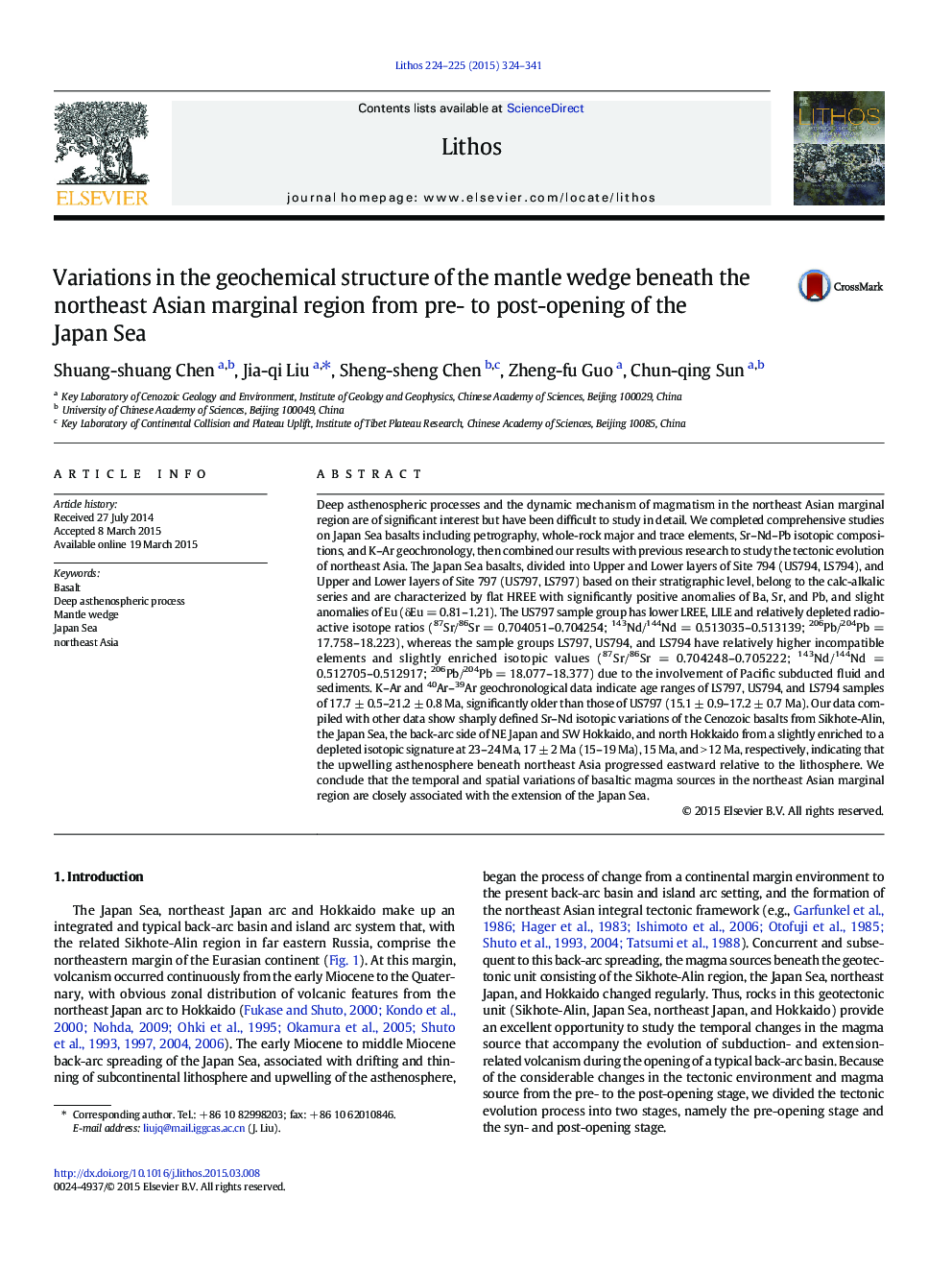| کد مقاله | کد نشریه | سال انتشار | مقاله انگلیسی | نسخه تمام متن |
|---|---|---|---|---|
| 4715742 | 1638665 | 2015 | 18 صفحه PDF | دانلود رایگان |
• Sr–Nd isotopes of the basalts from northeast Asian marginal region changed regularly.
• Sr–Nd variations from enriched to depleted resulted from DM upwelling, SCLM thinning.
• Temporal variations of Sr, Nd were associated with the opening of Japan Sea.
• The asthenosphere beneath northeast Asia eastward moved relative to the lithosphere.
Deep asthenospheric processes and the dynamic mechanism of magmatism in the northeast Asian marginal region are of significant interest but have been difficult to study in detail. We completed comprehensive studies on Japan Sea basalts including petrography, whole-rock major and trace elements, Sr–Nd–Pb isotopic compositions, and K–Ar geochronology, then combined our results with previous research to study the tectonic evolution of northeast Asia. The Japan Sea basalts, divided into Upper and Lower layers of Site 794 (US794, LS794), and Upper and Lower layers of Site 797 (US797, LS797) based on their stratigraphic level, belong to the calc-alkalic series and are characterized by flat HREE with significantly positive anomalies of Ba, Sr, and Pb, and slight anomalies of Eu (δEu = 0.81–1.21). The US797 sample group has lower LREE, LILE and relatively depleted radioactive isotope ratios (87Sr/86Sr = 0.704051–0.704254; 143Nd/144Nd = 0.513035–0.513139; 206Pb/204Pb = 17.758–18.223), whereas the sample groups LS797, US794, and LS794 have relatively higher incompatible elements and slightly enriched isotopic values (87Sr/86Sr = 0.704248–0.705222; 143Nd/144Nd = 0.512705–0.512917; 206Pb/204Pb = 18.077–18.377) due to the involvement of Pacific subducted fluid and sediments. K–Ar and 40Ar–39Ar geochronological data indicate age ranges of LS797, US794, and LS794 samples of 17.7 ± 0.5–21.2 ± 0.8 Ma, significantly older than those of US797 (15.1 ± 0.9–17.2 ± 0.7 Ma). Our data compiled with other data show sharply defined Sr–Nd isotopic variations of the Cenozoic basalts from Sikhote-Alin, the Japan Sea, the back-arc side of NE Japan and SW Hokkaido, and north Hokkaido from a slightly enriched to a depleted isotopic signature at 23–24 Ma, 17 ± 2 Ma (15–19 Ma), 15 Ma, and > 12 Ma, respectively, indicating that the upwelling asthenosphere beneath northeast Asia progressed eastward relative to the lithosphere. We conclude that the temporal and spatial variations of basaltic magma sources in the northeast Asian marginal region are closely associated with the extension of the Japan Sea.
Figure optionsDownload as PowerPoint slide
Journal: Lithos - Volumes 224–225, May 2015, Pages 324–341
